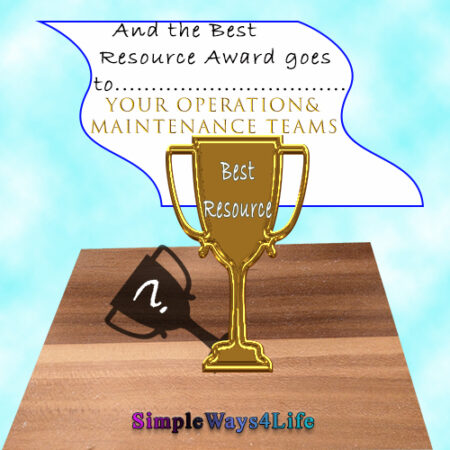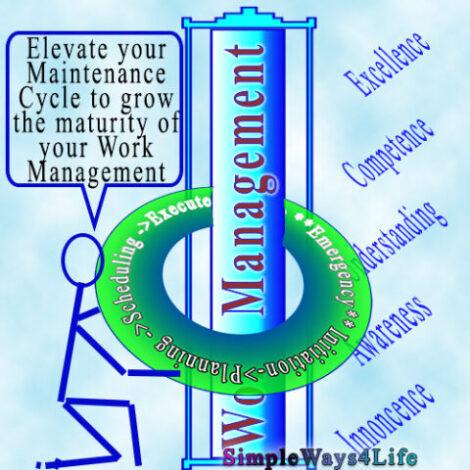We had discussed in our previous chat why we need to seek knowledge as a source of our failure effect record 7-Reliability made easy- Who has the Failure Effect knowledge? . The focus was on the manufacturer as the number one source that comes to mind for trustworthy knowledge. However we had pin pointed the pros and cons of the information coming from the manufacturer. Even in the chat before that we had discussed the importance of Failure Effect for the RCM (Reliability-Centered Maintenance) process. Read about that here: 6-Reliability made easy – Failure Effect (FE) is the base of reliability decisions.
In this chat let’s sum up the sources of Failure Effect knowledge and select the best one.
Other users of same equipment
You can find them on forums, through your spare parts supplier or even the equipment vendor. Most of the time the users of the same equipment in your local region are your market competitors. The relation would depend on the policies of your workplace and their workplace. I had personally experience the exchange of spare parts with competitors. The company was mature enough to understand that we are competing in the sales, prices, revenue, customers and so on but not in the flesh and bones of the working assets.
You can find international users of the same equipment who posts their problems and how they solve it online. You can find them open for discussions and recommendations. However you need to mind the difference in operation context and local environment and talents before blindly applying their best practices. That’ why the pros and cons of best practices were demystified in this previous chat: Is there only one way to do maintenance?. Nevertheless, their practices are great eye openers for you to upgrade and see a different point of view of you local operation and maintenance context.
Your own records
Records include the facts and numbers. So they are a great source for analysis data and coming to conclusions. However:
- You won’t find prediction of failures that didn’t happen yet
- They seldom link different failures. Each failure or maintenance record is meant to standalone to fit in the analysis process.
- They include what you requested your team to record and provided a space for. Other notes, observations and recommendations are within the executers mind and body. Releasing them out would need a medium for that.
Your team whether maintainers or operators
That’s the ultimate source. But as a universal law, everything has its own pros and cons. Here the cons are not real cons but are really limitations. When you are just starting, the accumulated knowledge of the team is still not mature enough in the current workplace. Their experiences are still that of their previous working locations. Previous experience comes from within a certain context that might be different from your current one. However as the team member was working there and now he is working here, he can clarify the context in both locations.
Other limitations comes from the business environment. Does it encourage collaboration, information sharing, passing of experience, new ideas and recommendations? The current business environment might praise doing rather than thinking. Then, the team doesn’t have time to think, analyze and recommend improvement. When the team is not encouraged to recommend improvement, they won’t bother themselves of looking deep into the problems and looking for its real root causes.
Preliminary step on the track to RCM
As a solution or even as a preliminary step in starting to collect the Failure Effect from your maintenance and operation teams, start to stimulate their curiosity of investigation and exploration of might be the real source or cause of this particular failure. As we had said in the records part, usually what is recorded is the immediate cause of the failure. Other causes that might appear few days or weeks later are not reflected to the first induced failure of the underlaying original failure. The underlaying original failure was stimulating other failures that were repaired and recorded individually.
The link between the failure that happened today and the other failures that happened days or weeks before is only within the mind of your knowledgeable conscious maintainer and operators. Normally you wont find a place in any failure recording system that allows this link. Only Root Cause analysis sessions can clarify the image to your team and help them better notice the complete failure context not only the superficial failure modes. That’s the real value of your team. However who ask the correct question to stimulate the correct answer need to have this experience, practice and patience of digging down. Awakening your team to see the big picture is not a quick win but something that would appreciate on the long run and you would never regret it.
Who is awarded the “Best Source” award?
The four main sources for knowledge that can be used to collect the Failure Effect of different Failure Modes are:
- The Manufacturer /Vendor / Supplier of your equipment
- Other users of same equipment
- Records of your workplace maintenance and operation
- Your maintenance and operation teams
In the Failure Effects gathering, you need the answers to mainly some questions:
- How the failure was detected?
- What happened? from the safety and environment point of view -if any-
- How the production was affected -if any-
- Was there a physical damage?
- How it was repaired? including numbers for time, direct cost, manhours, etc.
The first two resources varnish you with enough information but usually it wont match your operating context. They give you a framework and a guidance. Also, they are eye openers for you to new opportunities and ideas that might be not common in your operation context. These information need to be digested then modulated to match your specific needs.
The third source, even it is your own data, however it gives mere facts of failures that already occurred. It skips how the failure was detected. Usually it wont point out enough details about the effects or the repair complications. Cost might or might not be included based on the data available to the recorder of the feedback.
The first position goes to your team of operators and maintainers. Why? They have all these knowledge and they use it in their response to coming failures. However there is no system that releases this knowledge from them and record it in a useful usable way. That’s you role when you hold the sign board of the RCM.

If you feel you need help with any of these ideas we discussed, request a Management Consultancy or Coaching Services From our Store







